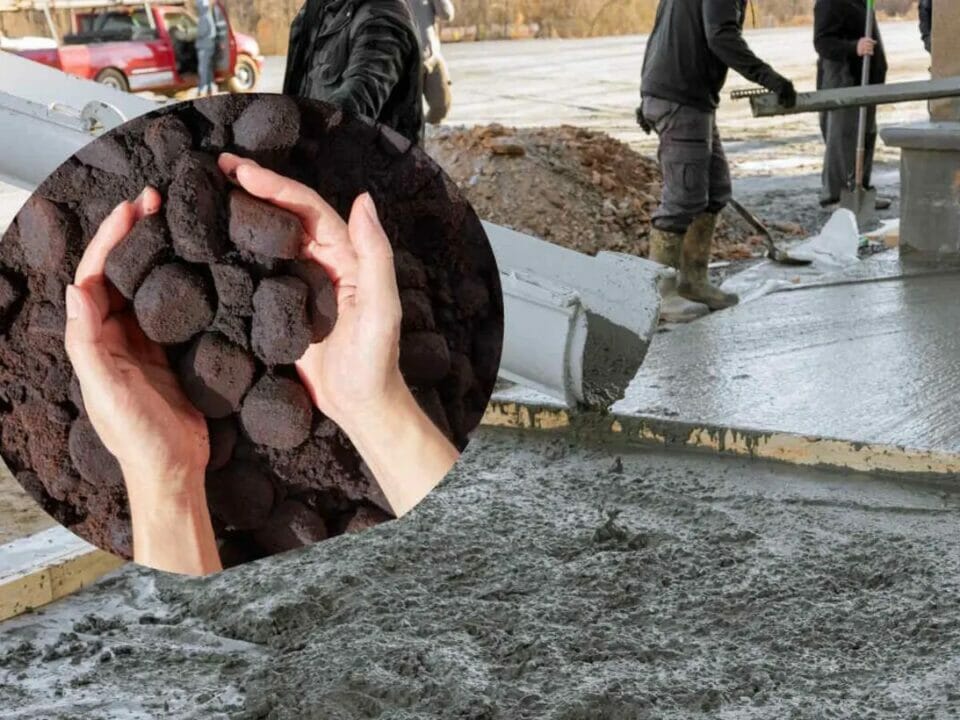
New concrete composed of coffee grounds could revolutionize the construction sector. The technology is focused on sustainability, being up to 30% stronger than conventional concrete.
Despite being a material created thousands of years ago, concrete has been undergoing several technological innovations lately, promising revolutionize construction, putting it on a more sustainable and planet-friendly path. On this list is a new concrete that captures carbon instead of emitting it, customized concrete with metamaterials, a concrete that talks, a transparent concrete and even a concrete made with blood, tears and sweat. This time, engineers from Australia developed a way to make concrete stronger using coffee grounds.
Understand how concrete with coffee grounds can be up to 30% more resistant
According to Rajeev Roychand, from RMIT University, the inspiration for the scientists' work was to find an innovative way to use large amounts of coffee waste in construction projects, instead of going to landfill, to give coffee a double boost of energy.
The technique consists of adding carbon to the cement that is part of the concrete. For this to be possible coffee grounds are transformed into biochar, which replaces part of the sand that is used to form concrete, thus revolutionizing civil construction.

The original coffee grounds contain organic compounds that hinder the hydration reaction, thus reducing the compressive strength of the concrete. Therefore, in order to use the sludge, it must first be pyrolyzed between 350 and 500 ºC, which gives it the strongest bond with the cement matrix.
Replacing 15% of the sand volume with pyrolysis biochar at 350ºC provides an improvement of approximately 30% in concrete strength, being an innovation for the civil construction sector.
Benefits that coffee grounds bring to the construction sector
In addition to making concrete stronger, the mixture acts in two essential areas in relation to the environment, giving a useful destination to coffee grounds, which are currently thrown into landfills and reducing the need for sand extraction.
According to Professor Jie Li, the continuous extraction of natural sand around the world, normally taken from riverbeds and banks, to meet the great demands of the construction industry has a great impact on the environment.
There are major critical and long-lasting obstacles to maintaining a supply sustainable of sand due to the finite nature of the resources and the environmental impacts of sand mining. In this way, coffee grounds can provide a great solution, benefiting nature.
The researchers now plan to begin field tests in collaboration with companies that can transform coffee grounds into biochar, and with contractors to use the resulting concrete.
Other sustainable concretes emerging around the world
As mentioned at the beginning of the article, concrete is increasingly bringing innovative technologies. In July this year, researchers developed a technically and economically viable formula to produce carbon-negative and environmentally friendly concrete, which is almost as resistant as conventional concrete.
Zhipeng Li and researchers from Washington State University, in the USA, took ordinary cement and infused it with charcoal, a type of charcoal composed of organic waste, which had previously been reinforced with wastewater collected from the cement production itself.
Charcoal was able to suck up to 23% of its weight in carbon dioxide from the air during the curing process, giving it strength comparable to that of ordinary cement. This represents the potential to significantly reduce carbon emissions from the cement industry, which is one of the most polluting of all manufacturing industries.











Army summons Brazilians with up to…
Come be a watermelon, you too
Air Force F-16 fighters…
Everything is fine, 100-year secrecy,…
Air Force F-16 fighters…
Well... It's flying scrap... Typical...
Air Force F-16 fighters…
Which genocide are you talking about? Than…
They discover the third largest deposit…
That’s why all foreigners and NGOs…
They give opportunities to drivers with no experience I have…
Since the day our dear
I warned you, Japan is ahead,…
Tunnels are going to be drilled in Serra do Mar…
If there's still space, I'm available! I act…
Mercedes conquered space by selling simplicity, durability…
I am a Category D driver and a farmer, I have…
Making the necessary components causes pollution…